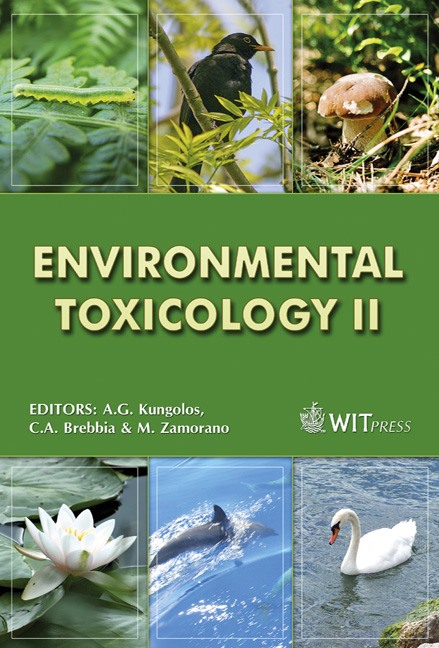Toxicity Assessment Of Effluents
Price
Free (open access)
Transaction
Volume
110
Pages
9
Page Range
83 - 91
Published
2008
Size
333 kb
Paper DOI
10.2495/ETOX080091
Copyright
WIT Press
Author(s)
T. Tišler & J. Zagorc-Končan
Abstract
Experiences have shown that the effective control of effluent discharges has contributed to continuous improvement of the receiving waters. An important intrinsic property of effluent is toxicity, which should be properly evaluated to protect the aquatic ecosystems. Previous experiences have shown that identification of individual potentially toxic substances has many limitations. Nowadays, an integrated strategy is used in programmes for monitoring the quality of effluent discharges, which involves chemical determinations as well as toxicity tests. In Slovenian regulations, acute toxicity assessment using water fleas is a standard part of the monitoring programme for effluents discharging into receiving streams if toxic compounds in the effluent are expected. The aim of this study was to assess the adequacy of the daphnid acute toxicity test for characterisation of effluents containing different hazardous chemicals. In most cases Daphnia magna was found to be very sensitive to toxic effluents in comparison to luminescent bacteria Vibrio fischeri, algae Desmodesmus subspicatus and fish Danio rerio. However, in some cases, other organisms were more sensitive than daphnids, for example algae D. subspicatus when exposed to effluent from the chemical industry. Our results show that using a battery of test species and endpoints results in more reliable and comprehensive quality assessment of effluents discharging into receiving streams. Keywords: Danio rerio, Daphnia magna, Desmodesmus subspicatus effluent quality, monitoring programme, regulation, toxicity, Vibrio fischeri. 1 Introduction Effluents, either from industrial or municipal sources, are very important sources of chemicals entering aquatic ecosystems. They may contain hundreds to
Keywords
Danio rerio, Daphnia magna, Desmodesmus subspicatus effluent quality, monitoring programme, regulation, toxicity, Vibrio fischeri.





